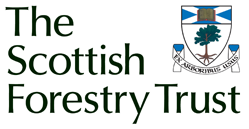Silvicultural diversity and birds in Scots pine forests
Carried out by: British Trust for Ornithology
Summary Description:
A collaborative study by the BTO, with Forest Research and Forestry Commission Scotland, to discover the effects for bird populations of changes in forest management, from clear-fell rotation to more naturalistic continuous cover forestry. Most of Britain’s forest cover is plantations and their management significantly influences populations of woodland birds at national level. Selected sites will be monitored using timed point counts in stands of different structure representing different management systems. Generalised linear mixed models will be used to analyse data and identify the nature of associations of bird species presence and abundance with forest structure. Field methods will be compatible with a previous clear-fell Sitka spruce study to permit joint analyses. The study will produce guidance on relative gains and losses associated with different systems, to inform Scottish and UK forestry practice, increase biodiversity benefits and possibly lead to a European study to maximise biodiversity within commercially managed forests.
Timescale: 2015-2016
SFT Funds Awarded: £3,830
Project Outcomes:
Continuous cover forestry (CCF) is increasingly advocated for stand management, with biodiversity among the ecosystem services perceived to benefit, however their long term (>100 years) influences are poorly understood. Surveys of breeding birds in Scottish Scots pine forests (seven study areas) were used to quantify associations of species richness and abundance with different forest structures. In particular, this included the influences of forest structural heterogeneity, young growth stages and features of old forests (old trees and snags). Heterogeneity in canopy layer structure (at a scale typical of many song bird territories) and the occurrence of old growth features were associated with higher abundance of more bird species. Many associations were species-specific. For example, Redstarts favoured areas with old trees near to open areas with young trees while Crested Tits also required snags but young growth areas were less important. Knowledge of individualistic species responses to forest structure can inform management benefiting priority species but requires better understanding of optimal structural mosaics and frequencies of old trees and snags for those species. Both CCF and clear-felling rotations offer opportunities to deliver structural mosaics at different scales and it has been suggested that conditions for both shrub-dependent and mature forest bird species is best delivered through inclusion of both within managed forests. This is likely also consistent with long term sustainable forest management that is resilient to changes in avifauna, including those in response to extrinsic factors that can be expected during the course of long-term forest management plans.
